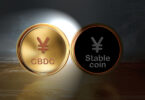China has numerous blockchain trade finance initiatives. Yesterday, Fan Yifei, the deputy governor of the People’s Bank of China announced that one of its initiatives has processed volumes of more than RMB 70 billion ($9.8 billion). The
Bay Area Trade Finance Blockchain Platform focuses on cross border trade.
Two months ago, the transactions on the
China Construction Bank blockchain network crossed the 360 billion renminbi ($50.4 billion) mark. And the
CITIC / Bank of China initiative has processed more than 20 billion renminbi ($2.8 billion) on its forfeiting blockchain. Between just these three projects that amounts to $63 billion in volume.
Consider the rate of growth. In the case of the central bank’s Bay Area platform, the increase is 133% in just five months. That’s up from RMB 30 billion ($4.2 billion) in early July to RMB 70 billion now.
Article continues …
Want the full story? Pro subscribers get complete articles, exclusive industry analysis, and early access to legislative updates that keep you ahead of the competition. Join the professionals who are choosing deeper insights over surface level news.







